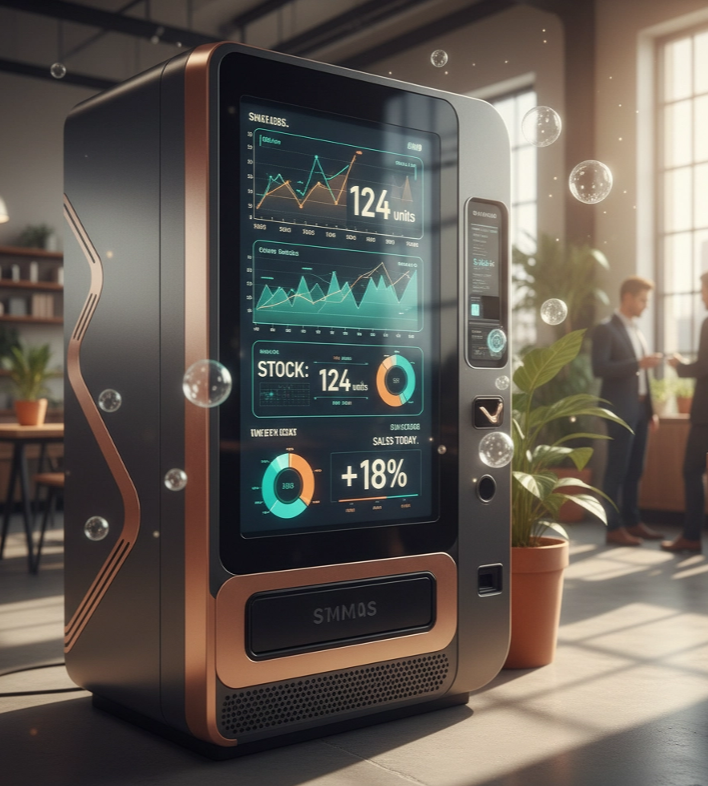From Idea to Action: Building Pura Vida Air in 5 Months
Five months ago, Pura Vida Air was nothing more than a concept, a sketch on paper about creating a vending business that was more than just snacks behind glass.
Today? It's an LLC with machines humming away in warehouses, a condominium, and a growing customer base that actually seems to like what we're doing.
The story of how we got here is worth telling, not because it was perfect (spoiler alert: it definitely wasn't), but because it was real. And if you've ever wondered what it's like to go from "hey, this might be a good idea" to "wait, I actually have a business now," buckle up. This ride's been wild.
The Predictable Mistakes (Because Of Course There Were Some)
Let's start with the fumbles, because honestly, they're more entertaining and probably more useful than the wins.
Mixing Personal and Business Like a Bad Smoothie
In the beginning, I made the classic rookie mistake: everything was personal. Personal credit cards for business expenses, my personal accounts handling transactions, basically treating this whole thing like an expensive hobby instead of, you know, an actual business.
It seemed simpler at the time. Why complicate things with separate accounts and formal structures when you're just "testing the waters"? Well, turns out those waters get deep fast, and when tax season rolls around, you're left trying to untangle five months of receipts that are scattered between personal and business like confetti at a New Year's party.
The fix? We structured a clean LLC foundation, properly this time, with business credit, formal contracts, and all the grown-up paperwork that makes accountants smile and the IRS leave you alone.
The Great Chip and Candy Catastrophe
Early on, I fell into the vending machine trap of the ages: chips, candy, soda, repeat. It seemed logical, that's what vending machines do, right? Stock 'em with the classics and watch the quarters roll in.
Except customers kept asking for things like protein bars, healthier snacks, and actual food that wouldn't send them into a sugar crash at 3 PM. Who knew people wanted options that wouldn't require a nap afterward?
The lesson? Listen to your customers, not your assumptions. That warehouse worker asking for beef jerky isn't being difficult, they're telling you exactly what they'll spend money on.
Recordkeeping: The Thing I Thought I Could Skip
Remember when I mentioned treating this like a hobby? Well, hobbies don't need board resolutions, operating agreements, or detailed financial records. Businesses do. Guess which one I forgot I was building?
Cue several weeks of backfilling resolutions, agreements, and trying to reconstruct financial records from memory and scattered receipts. If you've ever tried to remember exactly what you bought at a convenience store three months ago, you know the struggle is real.
The reality check: Proper recordkeeping isn't bureaucratic busywork, it's the foundation that lets you scale without losing your sanity.
The Wins That Made It Worth It
But hey, mistakes are just expensive lessons, and the lessons led to some pretty solid wins.
Location Diversity = Sales Pattern Gold
One of the best early decisions was securing diverse locations right out of the gate. Warehouses, condos, and offices might all need vending machines, but they definitely don't need the same vending machines.
Warehouse workers grab protein bars and energy drinks during shift changes. Condo residents want late-night snacks and convenient essentials. Office folks are looking for that 2 PM coffee and something to tide them over until dinner.
Each location taught us something new about customer behavior, sales patterns, and what actually moves off the shelves versus what sits there looking pretty.
Smart Coolers: Not Just a Fancy Upgrade
Investing early in smart cooler technology felt like a splurge at the time, but it turned out to be one of our best moves. Real-time inventory tracking means no more "surprise, you're out of the only thing people want to buy" moments.
Remote monitoring lets us adjust pricing, track what's selling, and plan restocks without driving around to check machines like it's 1995. Plus, refrigerated options opened up a whole new world beyond chips and candy: fresh sandwiches, yogurt, actual meals that don't require a microwave and a prayer.
The data these machines provide is insane. We can see purchasing patterns, peak hours, and customer preferences in real-time. It's like having a crystal ball, except the crystal ball tells you exactly how many Red Bulls sold on Tuesday.
The LLC Foundation: Making It Official
Taking the step to form Pura Vida Air LLC properly: with business credit, formal governance, and actual grown-up contracts: was the moment this shifted from "David's vending experiment" to "an actual enterprise with room to grow."
Having a formal business structure doesn't just make you feel more legitimate (though it does). It opens doors to better financing, partnerships, and growth opportunities that aren't available to the "guy with some vending machines."
The Vision Goes Beyond Snacks
Here's the thing about Pura Vida Air that might surprise you: we're not really in the snack business. We're in the convenience and service business that happens to start with snacks.
The vending machines are the foundation, but the vision is bigger. It's about building reliable service systems and using that foundation to scale into larger enterprises. Think of it like this: once you prove you can consistently deliver what people need, when and where they need it, the opportunities multiply.
Maybe it's expanding into different types of automated retail. Maybe it's providing comprehensive facility services. Maybe it's something we haven't even thought of yet. But it all starts with doing the basics really well.
The Real Numbers: 5 Months In
Let's get practical for a second. Where are we actually at after five months?
Multiple live locations with diverse customer bases
Smart technology providing real-time data and insights
Formal LLC structure with proper business practices
Growing customer base that's actually engaging with our services
Clear month over month growth trajectory based on real performance data
More importantly, we've built a foundation that can scale. The systems, processes, and relationships are in place to add new locations, expand services, and grow strategically rather than just throwing stuff at the wall to see what sticks.
For the Aspiring Entrepreneurs Out There
company quickly, here's what I learned: Read, read, read, then act. Action beats theory every single time.
You don't need a perfect plan. You don't need unlimited funding. You don't need to have figured out every detail before you start. What you need is the willingness to start, learn from mistakes, and adapt quickly.
The five-month timeline proves it's possible to:
Go from idea to operational business
Learn from mistakes without letting them stop you
Build systems that scale
Create something that provides real value
But here's the key: you have to be willing to actually do the work, not just think about doing the work. Planning is important, but execution is everything. The mantra: Plan the work, then work the plan.
What's Next for Pura Vida Air?
We're just getting started. The foundation is solid, the systems are working, and the opportunities are multiplying. Watch this space, because the story of Pura Vida Air is proof that you can turn an idea into a living, breathing business faster than you think.
Whether you're considering a side hustle, wondering about starting your own venture, or just curious about what it takes to build something from scratch, remember this: five months is all it took to go from sketch to LLC.
What could you build in five months if you started today?
Ready to see what we're up to? Check out our story and follow along as we continue growing from idea to enterprise, one smart decision (and inevitable mistake) at a time.































